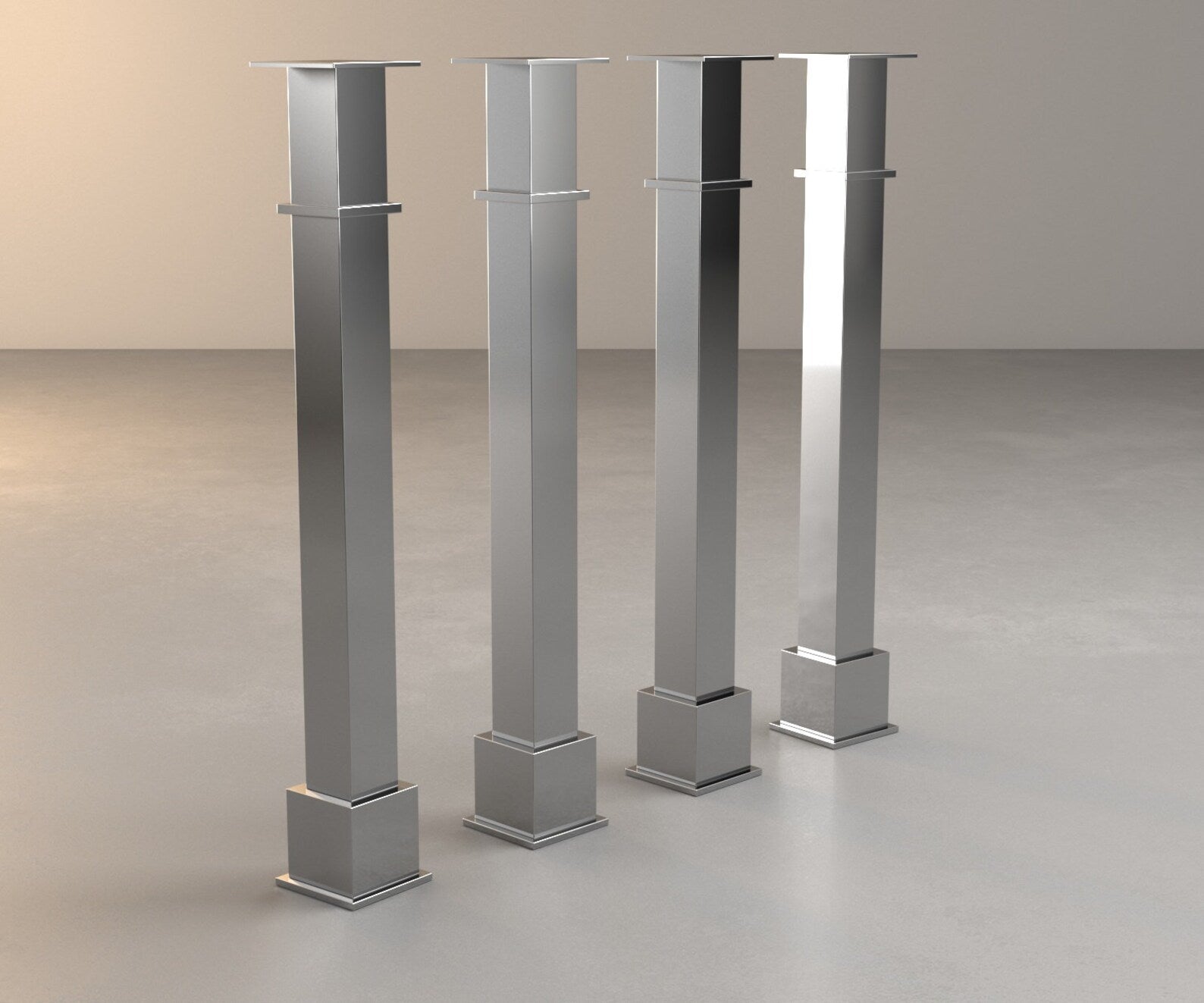Change Your Kitchen's Appearance with Special Legs For Kitchen Island Accessories
Change Your Kitchen's Appearance with Special Legs For Kitchen Island Accessories
Blog Article
Essential Aspects to Think About When Choosing Legs For Kitchen Area Island
Selecting the ideal legs for a cooking area island entails a cautious evaluation of multiple variables that can significantly affect both capability and aesthetic appeal. Among these, the option of material plays a pivotal function in making sure toughness, while the style should enhance the existing decoration. Considerations such as height and weight support are essential for stability and comfort. As we discover these components, it comes to be clear that each choice can have far-reaching implications for the total kitchen experience. What subtleties should be taken into consideration in each of these groups to accomplish the perfect equilibrium?
Material Options
When selecting legs for a kitchen island, understanding the numerous material choices is necessary for accomplishing both aesthetic charm and architectural stability (Legs For Kitchen Island). The choice of product significantly influences not just the longevity of the island but also its general style and capability
Metal legs, commonly made from stainless steel or wrought iron, add a commercial and contemporary feeling while making certain durability and stability. These materials are immune to put on and can support significant weight, making them excellent for larger islands.
An additional option is engineered products, like MDF or plywood, which can be more cost-effective while still offering a variety of coatings. They may not provide the exact same level of security as solid wood or metal. Legs For Kitchen Island. Lastly, products such as acrylic or glass can develop a modern appearance, though they might call for additional support to ensure security.
Eventually, the option of product for kitchen area island legs should line up with the desired functionality and the overall style of the kitchen.
Style and Style

When considering style, the shape and finish of the legs are crucial. Conical legs can supply a feeling of agility and elegance, while thicker, a lot more durable legs can communicate toughness and security. In addition, the coating-- be it painted, tarnished, or all-natural-- must match the kitchen cabinetry and counter top materials to create a unified appearance.
Moreover, the style of the legs can also mirror individual preference. Customized or attractive legs, such as those featuring complex carvings or distinct geometric shapes, can work as focal factors, including personality and personality to the kitchen area. Eventually, the appropriate choice will certainly not just enhance capability yet likewise raise the aesthetic allure, making the kitchen area island a standout attribute of the home.
Elevation Factors To Consider
Choosing the appropriate height for cooking area island legs is crucial, as it straight influences both functionality and convenience. The basic elevation for a cooking area island usually varies from 36 to 42 inches, lining up with usual counter top heights.

It is likewise essential to represent users' elevations and choices. Customizing the height can guarantee a comfortable experience for all relative, making the kitchen island an extra practical and pleasurable space.
Weight Assistance
Guaranteeing sufficient weight support for kitchen island legs is crucial for both safety and security and capability. The kitchen area island typically serves numerous objectives, consisting of food preparation, dining, and extra storage space, requiring a durable assistance framework. click now When picking legs, it is critical to consider the overall weight ability needed based upon the island's planned usage and the materials that will be placed on it.
The option of material for the legs plays a significant duty in their weight-bearing abilities. Strong wood, metal, and durable compounds generally offer superior stamina contrasted to lighter materials. Additionally, the layout of the legs-- whether they are directly, tapered, or have a pedestal type-- can influence their capacity to distribute weight effectively across the structure.
Constantly seek advice from the maker's specs regarding lots limitations to ensure that the legs can maintain the intended weight without endangering safety. In summary, choosing kitchen area island legs with ample weight support is vital for producing a useful and risk-free culinary room.
Setup and Maintenance
Correct installment and maintenance of kitchen island legs are essential for making sure long life and page stability. This often involves safeguarding the legs to the island base utilizing proper fasteners, making sure that the legs are degree and straightened.
Once mounted, normal maintenance is necessary to maintain the honesty and look of the legs - Legs For Kitchen Island. For wooden legs, periodic cleaning with a wet towel and application of suitable wood gloss can protect against dampness damages and preserve their finish. Metal legs might require a gentle cleaning option to eliminate grease and crud, complied with by a dry cloth to stop rust formation
In addition, check the legs regularly for indications of wear or damages, such as fractures or loose joints. Tightening screws or bolts as required can likewise prolong the lifespan of the legs. By adhering to these setup and maintenance practices, home owners can ensure that their kitchen area island stays durable and aesthetically appealing for many years to come.
Verdict

Visual comprehensibility is extremely important in selecting the style and style of legs for a kitchen area island, as these aspects significantly affect the overall atmosphere of the space. Conical legs can give a sense of agility and beauty, while thicker, extra durable legs can convey strength and stability.Picking the ideal elevation for cooking area island legs is essential, as it straight impacts both performance and comfort. In recap, selecting cooking area island legs with adequate weight assistance is important for creating a safe and practical cooking area.
In verdict, selecting legs for a cooking area island demands careful factor to consider of different factors, including material choices, style, elevation, weight assistance, and installation.
Report this page